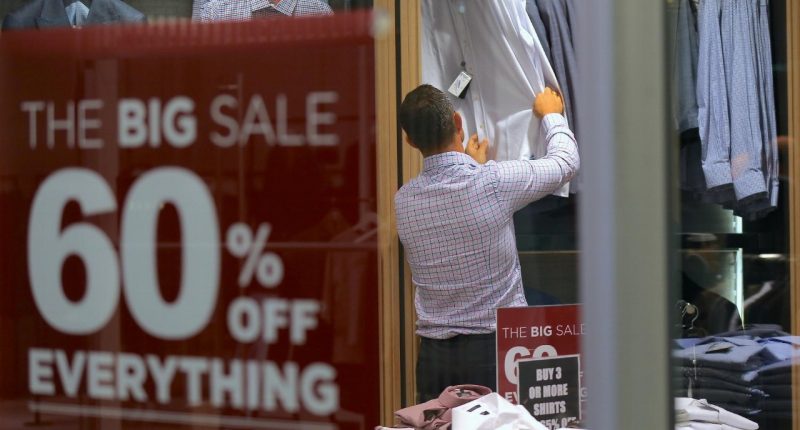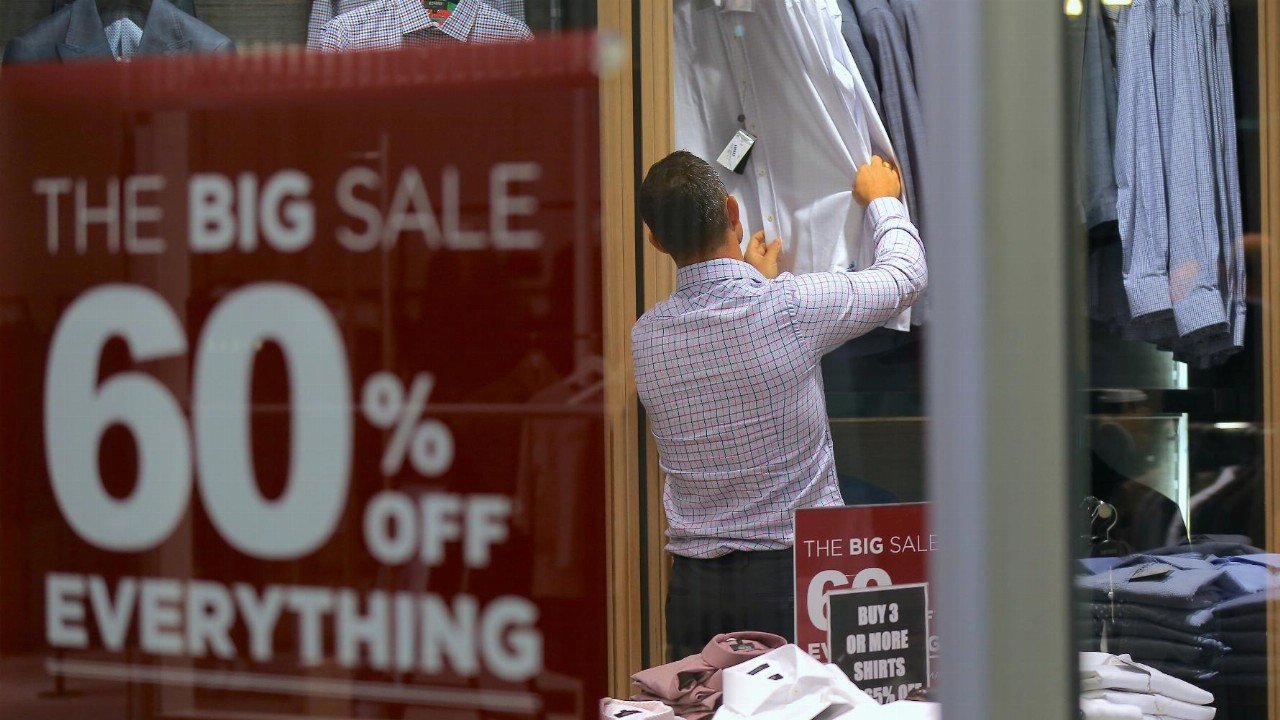- Australian retailers reported another month of strong sales in March while a measure of business conditions hit an all-time high in April
- According to data from the Australian Bureau of Statistics published on Monday, retail turnover climbed 1.3 per cent in March, following a 1.4 per cent rise in February
- The improvement was largely driven by record-high sales at cafes and restaurants
- Meanwhile, NAB said its index of business conditions jumped eight points to a new record during April
- However, real retail sales for the March quarter fell 0.5 per cent compared to a 2.5 per cent increase in the December quarter
Australian retailers reported another month of strong sales in March while a measure of business conditions hit an all-time high in April.
According to data from the Australian Bureau of Statistics (ABS) published on Monday, retail turnover climbed 1.3 per cent in March, following a 1.4-per-cent rise in February.
The improvement was largely driven by record-high sales at cafes and restaurants, and suggests the economy is coping well with the end of a government support program for jobs.
Meanwhile, the National Australia Bank (NAB) said its index of business conditions jumped eight points to a new record during April, with prevailing strength reported across the majority of sectors and regions.
“The April survey result is simply stunning — with many variables reaching survey highs,” said NAB’s chief economist Alan Oster.
“The strength in capacity utilisation points to an expansion in business investment and ongoing hiring, even as we pass the rebound phase in the economy and move through the JobKeeper hurdle.”
Capacity utilisation — a measure of the extent to which the productive capacity of a business is being used — jumped to 85.3 per cent in April from 82.5 per cent in March.
Despite the promising data, however, real retail sales for the March quarter fell 0.5 per cent compared to a 2.5 per cent increase in the December quarter.
That said, the data is heavily weighted towards the consumption of goods, and therefore does not reflect a spending switch from goods to services.
Marcel Thieliant, a senior economist at London-based research consultancy Capital Economics, said he expects a one per cent rise in real consumption in the March quarter — far less than a 4.3 per cent jump in the December quarter as spending patterns return to pre-pandemic levels.
More importantly, the implicit price deflator — a measure of the price of the average goods — rose by just 1.6 per cent in the March quarter compared to a year earlier.
“This will confirm the RBA’s view that there is no evidence yet of a widespread pick-up in inflation across the economy,” said Sarah Hunter, chief economist for BIS Oxford Economics.
The RBA has said it will not raise the cash rate from a record low of 0.1 per cent until actual inflation is sustainably within its two to three per cent target range.







